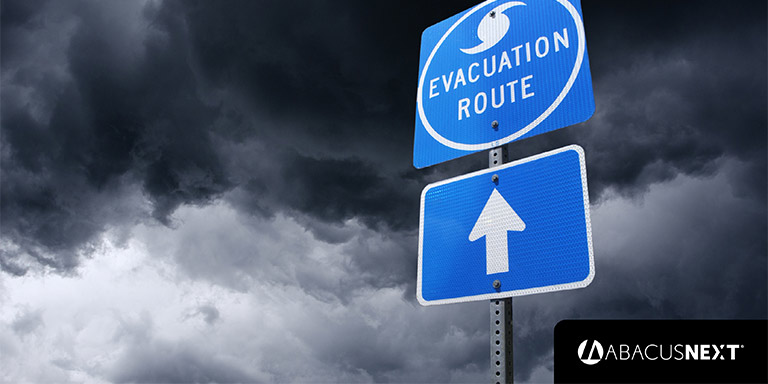Get your firm back on track after a natural disaster


In early September, Hurricane Dorian devastated the Bahamas and caused significant damage to theSoutheasternUnited States. Meanwhile, communities across the country are still recovering from last year’s hurricane and wildfire seasons. Not only do disasters like these take a toll on our families, economies, and local governments, they can also leave firms of all sizes in crisis.
From initial evacuations to long-term recovery efforts, the disruptions and losses firms experience can severely impact their bottom line. In fact, according to The Federal Emergency Management Agency (FEMA), 90 percent of small businesses impacted by a natural disaster fail within a year unless they can resume operations quickly. To get your firm up and running after a natural disaster, it’s crucial to plan ahead. Here are fourkey places to focus your efforts:
1. Create and test a formal disaster plan
Disaster-proofing your firm means more than protecting your physical and digital assets. A comprehensive disaster recovery plan should consider:
- Employee safety, including evacuation routes, first aid, and up-to-date emergency contact information
- Pre-identified temporary workspaces, including the option to work from home
- Clear expectations for employees, including who to call, where to report, and what to do if the office is compromised
- Various emergency scenarios (fire, earthquake, flood, etc.) and how to respond to each
Once your disaster recovery plan is in place, test and review it periodically with all employees. This will help everyone feel safer and more prepared in times of crisis.
2. Keep clients up to date
Clients don’t want to be left in the dark, even when your firm’s lights are out. Having a communications plan in place will allow you to stay in touch with clients during and after a natural disaster, keeping them informed about any delays in service and lapses in availability. Consider writing communications templates in advance, including social media statements and out-of-office replies, so you don’t have to worry about drafting emails during an already stressful experience.
3. Protect your data
In the age of cloud computing, there’s no excuse for letting your firm’s business-critical data live on a single local server. But even with a cloud-based storage solution, your data could be vulnerable during a disaster. Hurricanes can impact large geographical areas, so you’ll want your data to be replicated in a secondary region that’s hundreds of miles away from the primary data center. When choosing a cloud service provider, look for one that has geo-redundant data centers in multiple regions across the country.
4. Plan to work remotely
It may be weeks or even months before you’re able to return to the office, so you’ll want to make it as easy as possible to resume operations from home or a temporary location. Even with adequate storage and backup, working remotely isn’t as easy as logging on to the nearest computer. Losing physical hardware may mean losing programs that you use to access your data (at least temporarily), and even a forgotten password can cost you precious time.
One solution is to establish cloud-hosted virtual workspaces, which allow you and your staff to access virtual replicas of each computer in your network. Here, you’ll be able to access all programs, tools, client information, and business-critical documents remotely, just as they existed before you lost access to your physical desktops.
There’s no way around it: natural disasters are economically and emotionally draining. You can ease the burden by having a detailed disaster plan and the right technology in place – so you can get back online and back to serving your clients.
For more information on disaster preparedness, visit FEMA’s small business resource page.